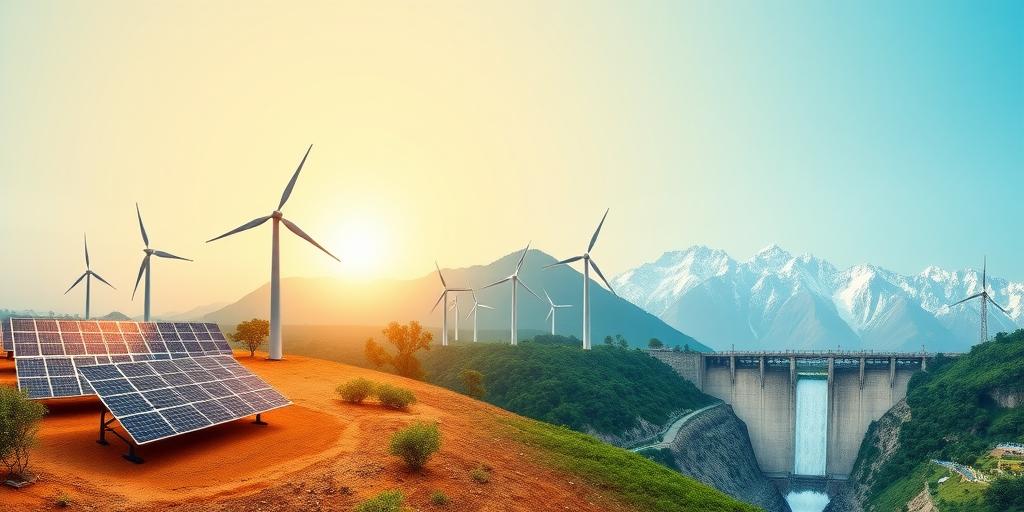Renewable Energy Sector: India’s Ambitions vs. Global Progress
India has set ambitious targets for renewable energy, aiming to significantly increase its capacity and reduce its reliance on fossil fuels. This article examines India’s renewable energy goals in the context of global progress, highlighting key achievements, challenges, and future prospects.
Global Renewable Energy Landscape
The global renewable energy sector has experienced substantial growth in recent years, driven by factors such as declining costs, technological advancements, and increasing awareness of climate change. Countries worldwide are adopting renewable energy sources like solar, wind, hydro, and geothermal to diversify their energy mix and mitigate greenhouse gas emissions.
India’s Renewable Energy Targets
India has committed to achieving 500 GW of renewable energy capacity by 2030, a significant increase from its current installed capacity. The country aims to meet a substantial portion of its electricity demand through renewable sources, contributing to its Nationally Determined Contributions (NDCs) under the Paris Agreement.
Key Achievements in India’s Renewable Energy Sector
- Solar Power: India has made remarkable progress in solar power, with large-scale solar parks and distributed solar projects contributing to its growing capacity. The country’s solar energy potential is vast, particularly in regions with high solar irradiance.
- Wind Power: Wind energy is another significant contributor to India’s renewable energy mix. Several states have harnessed wind power through wind farms and hybrid projects, utilizing both onshore and offshore wind resources.
- Hydro Power: Hydroelectric power has a long history in India, and the country continues to develop new hydro projects while also focusing on small hydro and pumped storage.
- Biomass Energy: Biomass energy, derived from agricultural residues and organic waste, offers a sustainable alternative to fossil fuels. India has been promoting biomass-based power plants and biogas projects.
Challenges and Opportunities
While India’s renewable energy sector has witnessed impressive growth, several challenges remain:
- Land Acquisition: Acquiring land for renewable energy projects can be complex and time-consuming, often involving regulatory hurdles and environmental concerns.
- Grid Integration: Integrating large-scale renewable energy into the grid requires significant investments in transmission infrastructure and grid management systems.
- Financing: Securing adequate financing for renewable energy projects is crucial, especially for long-term investments with uncertain returns.
- Policy and Regulatory Framework: A stable and supportive policy environment is essential to attract private sector investments and promote innovation in the renewable energy sector.
Future Prospects
India’s renewable energy sector holds immense potential for future growth, driven by:
- Technological Advancements: Continuous advancements in renewable energy technologies, such as solar PV, wind turbines, and energy storage systems, will enhance efficiency and reduce costs.
- Policy Support: Government initiatives, incentives, and regulations will play a pivotal role in accelerating the deployment of renewable energy projects.
- International Collaboration: Collaboration with other countries and international organizations can facilitate technology transfer, knowledge sharing, and financial support.
- Private Sector Investments: Increased private sector participation will drive innovation, competition, and economies of scale in the renewable energy sector.
Conclusion
India’s renewable energy ambitions align with global efforts to transition towards a sustainable energy future. By addressing the challenges and capitalizing on the opportunities, India can emerge as a leader in renewable energy, contributing to its economic growth, energy security, and environmental sustainability.
